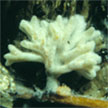Professor Emeritus
Ph.D. Botany University of Michigan, Ann Arbor, 1987
M.S. Botany, University of Minnesota, St. Paul
B.S. Forest Science University of Minnesota, St. Paul, 1978
Fungal Ecology and Systematics
Fungal Biology is the core interest of my lab, and in a world where organismal-based science and “ologies” have fallen out of favor I make no apologies for my focus on Mycology. Within this broad area my primary focus has been fungal ecology, and most of my work in this area has been at the community ecology or autecology levels. This is an important area of work because fungi play pivotal roles in all terrestrial ecosystems, and they are grossly understudied relative to their importance.
 Our prior work was primarily on ectomycorrhizal fungi and was focused on: 1) the development of molecular tools for the identification of fungi from environmental samples; 2) the determinants of fungal community structure; 4) the autecology and population structure of key ectomycorrhizal fungal species; and 5) the ecology and evolution of non-photosynthetic, epiparasitic plants and their fungal hosts, 6) structure, behavior and function of ectomycorrhizal spore banks. 6) landscape level patterns of spore dispersal and tree recruitment, and 7) population genomics of Suillus brevipes.
Our prior work was primarily on ectomycorrhizal fungi and was focused on: 1) the development of molecular tools for the identification of fungi from environmental samples; 2) the determinants of fungal community structure; 4) the autecology and population structure of key ectomycorrhizal fungal species; and 5) the ecology and evolution of non-photosynthetic, epiparasitic plants and their fungal hosts, 6) structure, behavior and function of ectomycorrhizal spore banks. 6) landscape level patterns of spore dispersal and tree recruitment, and 7) population genomics of Suillus brevipes.Current Projects
Funded projects in the lab (as of June 2016) have shifted toward saprobic communities. These include 1) autecology and function of pyrophilous fungal communities (DOE); 2) dynamics of microbial communities in the indoor environment (Sloan Foundation). We are also involved with collaborative work on Suillus species with the Kennedy, Nguyen, and Vilgalys labs, and Cat Adams, a graduate student in the lab, is working on Amanita phalloides, the invasive death cap.
The lab also interacts with citizen science groups such as the North American Mycological Association, The Bay Area Mycological Society, The Mycological Society of San Francisco, and the Sonoma Mycological Association. These groups have been instrumental in cataloguing and vouchering the macrofungi of Pt. Reyes National Seashore, Yosemite National park, and North America at large.
Shrestha, P, Szaro, TM, Bruns, TD, Taylor, JW (2011). “Systematic search for cultivable fungi that best deconstruct cell walls of Miscanthus and sugarcane in the field.” Applied and Environmental Microbiology, 77(15), 5490-5504.
Desjardin, D.E., Peay,K.G., Bruns, T.D. 2011. Spongiforma squarepantsii, a new species of gasteroid bolete from Borneo. Mycologia 103: 1119-1123.
Peay, K. G., P. G. Kennedy, and T. D. Bruns. 2011. Rethinking ectomycorrhizal succession: are root density and hyphal exploration types drivers of spatial and temporal zonation? Fungal ecology 4(3):233-240.
Amend, A., K. A. Seifert, R. Samson, T. D. Bruns. 2010. Indoor Fungal Assemblages are Geographically Patterned and More Diverse in Temperate Zones than the Tropics. Proc. Nat. Acad. Sc. 107(31): 13748-13753
Kabir G. Peay, Matteo Garbelotto and Thomas D. Bruns. 2010. Evidence of dispersal limitation in soil microorganisms: Isolation reduces species richness on mycorrhizal tree islands. Ecology 91: 3631-3640.
N.A. Hynson and T.D. Bruns. 2009. Evidence of a myco-heterotroph in the plant family Ericaceae that lacks mycorrhizal specificity. Proc. Roy. Acad. Sc. B 276:4053-4059
Kennedy P. G., Bergemann, S. E., Hortal, S., and T. D. Bruns. 2007. Determining the outcome of field-based competition between two Rhizopogon species using real-time PCR. Molecular Ecology 16(4): 881–890. doi: 10.1111/j.1365-294X.2006.03191.x.
Tom Bruns. 2006. Evolutionary biology: A kingdom revised. Nature 443: 758-761. doi:10.1038/443758a
Antonio Izzo, Diem Thi Nguyen and Thomas D. Bruns. 2006. Spatial structure and richness of ectomycorrhizal fungi colonizing bioassay seedlings from resistant propagules in a Sierra Nevada forest: comparisons using two hosts that exhibit different seedling establishment patterns. Mycologia 98(3): 374–383.
T. A. Rusca, P. G. Kennedy and T. D. Bruns. 2006. The effect of different pine hosts on the sampling of Rhizopogon spore banks in five Eastern Sierra Nevada forests. New Phytologist 170(3): 551-560
Izzo, A.D., M. Canright, and T.D. Bruns. 2006. The effects of heat treatments on ectomycorrhizal resistant propagules and their ability to colonize bioassay seedlings. Mycological Research 110(2): 196-202
Lilleskov, E. A. and T. D. Bruns. 2005. Spore dispersal of a resupinate ectomycorrhizal fungus, Tomentella sublilacina, via soil food webs. Mycologia 97(4): 762-769
Bidartondo, M.I. and Bruns, T.D. 2005. On the origins of extreme mycorrhizal specificity in the Monotropoideae (Ericaceae): performance trade-offs during seed germination and seedling development. Molecular Ecology 14: 1549–1560.
Rasmus Kjøller & Thomas D. Bruns. 2003. Rhizopogon spore bank communities within and among California pine forests. Mycologia 95: 603-613.
Martin I. Bidartondo, Dirk Redecker, Isabelle Hijrl, Andres Wiemken, Thomas D. Bruns, Laura Dominguez, Alicia Sersic, Jonathan R. Leake and David J. Read. 2002. Epiparasitic plants specialized on arbuscular mycorrhizal fungi. Nature 419: 389-392.
Horton, Thomas R. & Bruns, Thomas D. 2001. The molecular revolution in ectomycorrhizal ecology: peeking into the black-box. Molecular Ecology 10 (8): 1855-1871.
Tom Bruns
Berkeley, California 94720-3102

